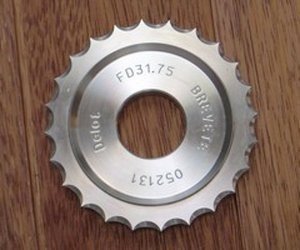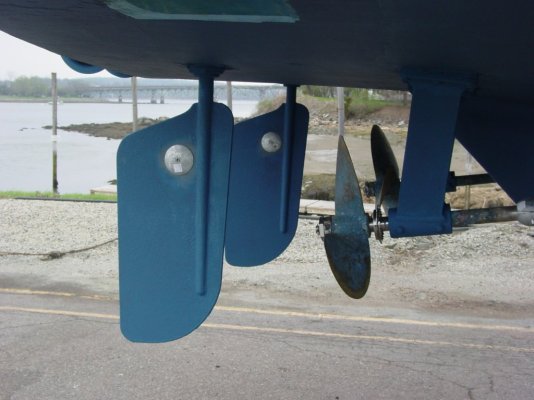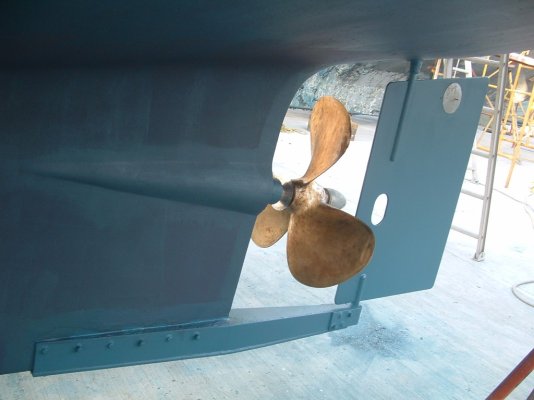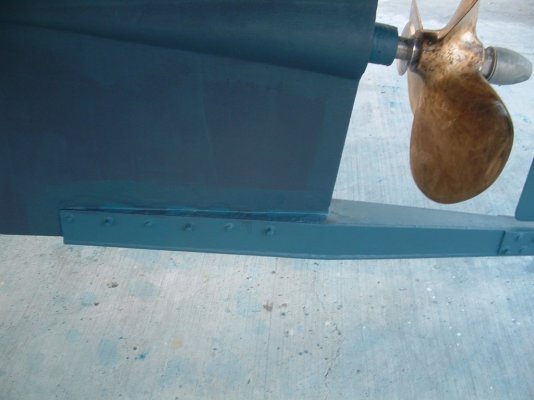SOMERS
Senior Member
There is quite allot of junk and discarded pot lines floating near the surface of the water , at night this can cause a big problem , even to the point of this shutting down your engine.
Twin engine boat could be a little more vulnerable, but do have that second engine to carry on with.
Single prop boats can and do get prop fouling.
A prop shaft can come loose from the flange coupling.
An inspection is required here, a 1/2" line can cause allot of damage
You could get lucky by momentarily putting the boat in reverse.
First option :- Ch 16 or Cell phone. *SEA TOW. Have a professional deal with the problem.
Last option :-
What i am about to tell you is very dangerous and requires prudence and due diligence
and must only be performed as a last option by a healthy competent person.
There is a need to have a plan of action or chain of events *that is agreed upon.
For Example " Show and Tell " *address crew by name.
Mavis *: I am stopping the Engine
Mavis : *I am stopping the generator
Mavis : *I am lowering the anchor.
The key to safe boating is " Communications"
I have had a dinghy line in my prop and i am not the only one.
May I put it this way , i am out for a cruise .
If we get a prop fouling and i have no other option open to me but to go over the side, *i would wait it out, till i decide *that it is safe to do so.
First of all the anchor will need be to be set *to secured the boat into to wind.
I will need :-
On Deck assistants.
Face mask.
Flippers.
Heavy gloves.
Tools.
Personal Safety Line, to the boat with a rescue pull code established, in case of leg cramp.
There are two other items required
1) A*construction helmet with chin strap *or a large motor cycle *helmet *with styrofoam removed and replaced with sponge rubber foam.
The helmets must be pre drilled at the top to eliminate buoyancy.
The helmet is a safety device to protect your head under water from a pitching boat.
2) *Hacksaw, also attach a line to prevent loss.
The *Blade should be *set in reverse *for a" pull action."
I would not *take any kind of *knife in the water.
I would not stay under water for long periods, just short stints.
I would allow for rest periods.
You are already stressed to start with.
Take your time.
Plan "B"
Have a parrots beak cutter pliers as an alternate cutting device which would *be safer to *use , also attach a line to prevent loss.
It is *VERY * dangerous *to go under a boat at sea.
-- Edited by SOMERS on Friday 11th of March 2011 04:59:02 PM
Twin engine boat could be a little more vulnerable, but do have that second engine to carry on with.
Single prop boats can and do get prop fouling.
A prop shaft can come loose from the flange coupling.
An inspection is required here, a 1/2" line can cause allot of damage
You could get lucky by momentarily putting the boat in reverse.
First option :- Ch 16 or Cell phone. *SEA TOW. Have a professional deal with the problem.
Last option :-
What i am about to tell you is very dangerous and requires prudence and due diligence
and must only be performed as a last option by a healthy competent person.
There is a need to have a plan of action or chain of events *that is agreed upon.
For Example " Show and Tell " *address crew by name.
Mavis *: I am stopping the Engine
Mavis : *I am stopping the generator
Mavis : *I am lowering the anchor.
The key to safe boating is " Communications"
I have had a dinghy line in my prop and i am not the only one.
May I put it this way , i am out for a cruise .
If we get a prop fouling and i have no other option open to me but to go over the side, *i would wait it out, till i decide *that it is safe to do so.
First of all the anchor will need be to be set *to secured the boat into to wind.
I will need :-
On Deck assistants.
Face mask.
Flippers.
Heavy gloves.
Tools.
Personal Safety Line, to the boat with a rescue pull code established, in case of leg cramp.
There are two other items required
1) A*construction helmet with chin strap *or a large motor cycle *helmet *with styrofoam removed and replaced with sponge rubber foam.
The helmets must be pre drilled at the top to eliminate buoyancy.
The helmet is a safety device to protect your head under water from a pitching boat.
2) *Hacksaw, also attach a line to prevent loss.
The *Blade should be *set in reverse *for a" pull action."
I would not *take any kind of *knife in the water.
I would not stay under water for long periods, just short stints.
I would allow for rest periods.
You are already stressed to start with.
Take your time.
Plan "B"
Have a parrots beak cutter pliers as an alternate cutting device which would *be safer to *use , also attach a line to prevent loss.
It is *VERY * dangerous *to go under a boat at sea.
-- Edited by SOMERS on Friday 11th of March 2011 04:59:02 PM






